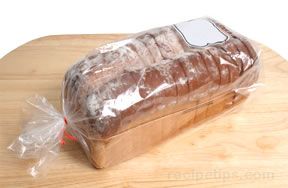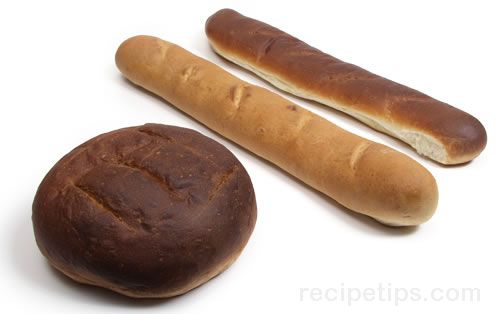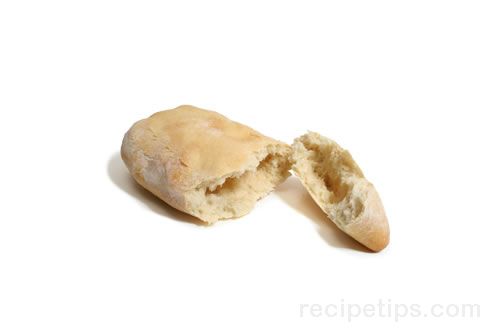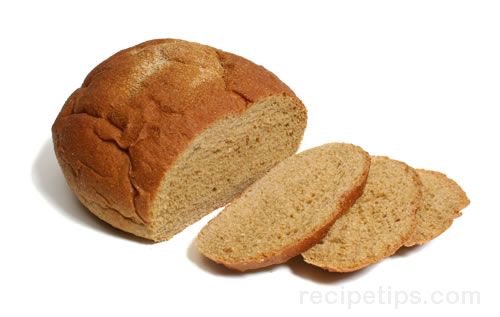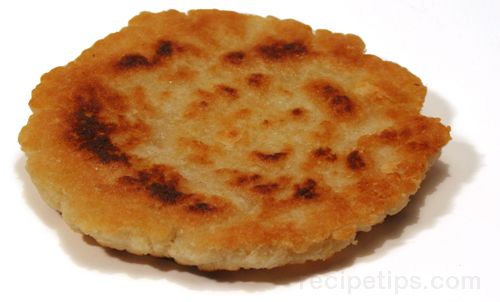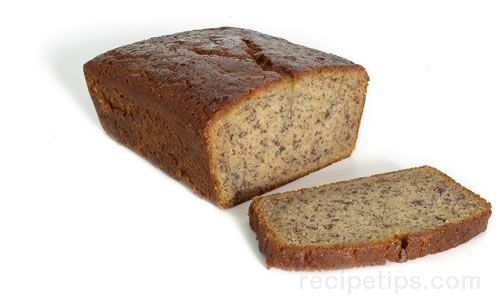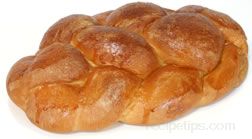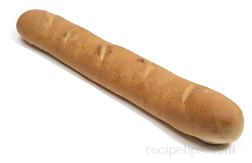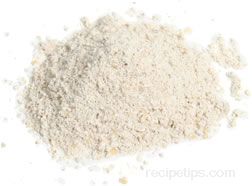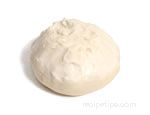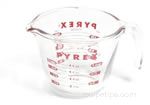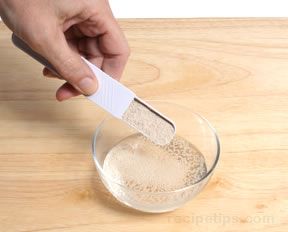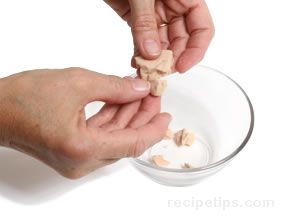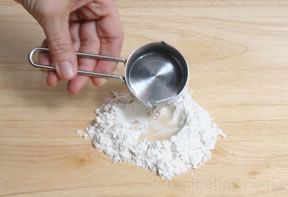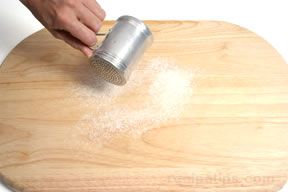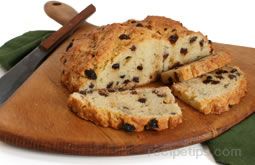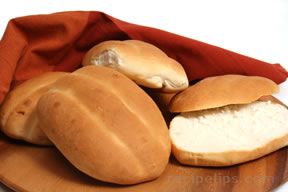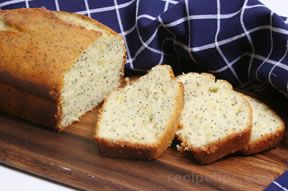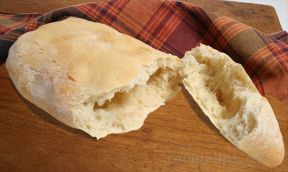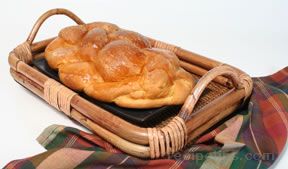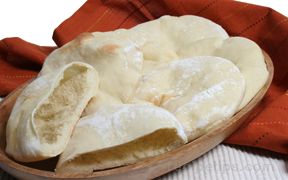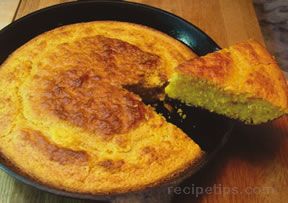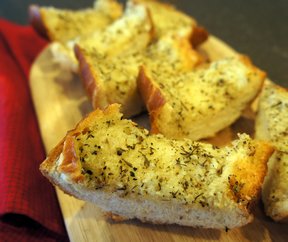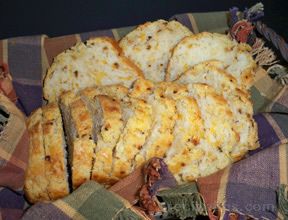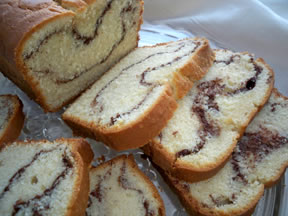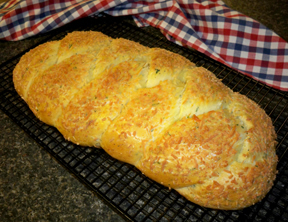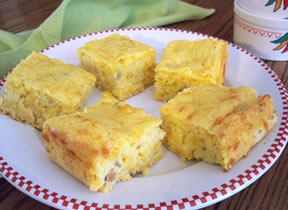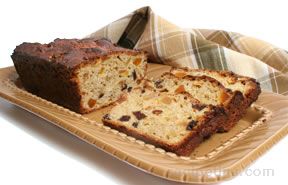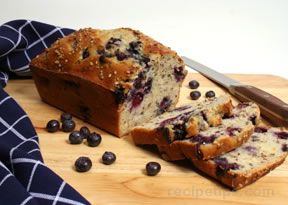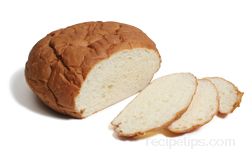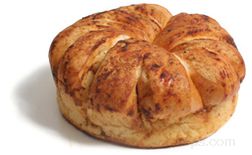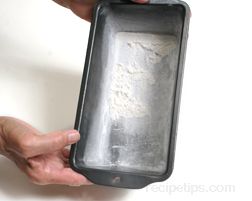Nutritional Profile of Bread | Significance of Enriched White Bread | Gluten
Nutritional Profile of Bread
| The nutritional profiles for the breads listed below represent average profiles for each type of bread. A serving size of 100 grams is used to show a comparison between the nutritional values of the different breads, but it represents a somewhat larger than average serving size for many of the breads described. |
|
Bread Type Serving Size: |
Calories | -Total Fat -Saturated Fat -Carbohydrate -Protein |
Cholesterol and Sodium |
% Daily Value of Significant Vitamins and Minerals |
|
Bagel |
272 | Total Fat = 2g. Sat. Fat = 0g. Carbs = 53g. Protein = 11g. |
Cholesterol = 0mg. Sodium = 530mg. |
Iron = 20 % |
|
Banana Bread |
323 | Total Fat = 11g. Sat. Fat = 2g. Carbs = 55g. Protein = 4g. |
Cholesterol = 44mg Sodium = 305mg. |
Vitamin A = 10% Iron = 8% |
|
Biscuit |
368 | Total Fat = 17g. Sat. Fat = 2g. Carbs = 49g. Protein = 6g. |
Cholesterol = 2mg. Sodium = 1056mg. |
Iron = 18% Calcium = 5% |
|
Boston Brown |
195 | Total Fat = 2g. Sat. Fat = 0g. Carbs = 44g. Protein = 5g. |
Cholesterol = 0mg. Sodium = 635mg. |
Iron = 12% Calcium = 7% |
|
Cornbread |
268 | Total Fat = 7g. Sat. Fat = 2g. Carbs = 44g. Protein = 7g. |
Cholesterol = 40mg. Sodium = 660mg. |
Calcium = 25% Iron = 14% Vitamin A = 6% |
|
Croissant |
410 | Total Fat = 22g Sat. Fat = 12g. Carbs = 46g. Protein = 8g. |
Cholesterol = 68mg. Sodium = 748mg. |
Vitamin A = 15% Iron = 11% |
|
French Bread |
272 | Total Fat = 3g. Sat. Fat = 1g. Carbs = 53g. Protein = 9g. |
Cholesterol = 0mg. Sodium = 612mg. |
Iron = 14% Calcium = 8% |
|
Irish Soda |
292 | Total Fat = 5g. Sat. Fat = 1g. Carbs = 57g. Protein = 7g. |
Cholesterol = 19mg. Sodium = 402mg. |
Iron = 15% Calcium = 8% |
|
Italian Bread |
270 | Total Fat = 4g. Sat. Fat = 1g. Carbs = 51g. Protein = 9g. |
Cholesterol = 0mg. Sodium = 587mg. |
Iron = 16% Calcium = 8% |
|
Oat Bread |
268 | Total Fat = 4g. Sat. Fat = 1g. Carbs = 50g. Protein = 8g. |
Cholesterol = 0mg. Sodium = 602mg. |
Iron = 15% Calcium = 7% |
| Panettone | 383 | Total Fat = 15g. Sat. Fat = 10g. Carbs = 60g. Protein = 8g. |
Cholesterol = 44mg. Sodium = 200mg. |
Vitamin A = 8% Iron = 8% |
| Pita Bread | 278 | Total Fat = 1g. Sat. Fat = 0g. Carbs = 55g. Protein = 9g. |
Cholesterol = 0mg. Sodium = 540mg. |
Iron = 15% Calcium = 9% |
| Potica | 385 | Total Fat = 18g. Sat. Fat = 4g. Carbs = 49g. Protein = 10g. |
Cholesterol = 13mg. Sodium = 218mg. |
Iron = 15% Calcium = 6% |
| Pumpernickel Bread |
250 | Total Fat = 3g. Sat. Fat = 0g. Carbs = 47g. Protein = 9g. |
Cholesterol = 0mg. Sodium = 675mg. |
Iron = 16% Calcium = 7% |
| Raisin Bread | 272 | Total Fat = 4g. Sat. Fat = 1g. Carbs = 52g. Protein = 8g. |
Cholesterol = 0mg. Sodium = 396mg. |
Iron = 16% Calcium = 7% |
| Rye Bread | 258 | Total Fat = 3g. Sat. Fat = 1g. Carbs = 49g. Protein = 8g. |
Cholesterol = 0mg. Sodium = 662mg. |
Iron = 16% Calcium = 7% |
| Stollen | 390 | Total Fat = 13g. Sat. Fat = 5g. Carbs = 59g. Protein = 7g. |
Cholesterol = 20mg. Sodium = 157mg. |
Iron = 11% |
| Wheat Bread | 260 | Total Fat = 4g. Sat. Fat = 1g. Carbs = 48g. Protein = 9g. |
Cholesterol = 0mg. Sodium = 536mg. |
Iron = 18% Calcium = 11% |
| White Bread | 264 | Total Fat = 3g. Sat. Fat = 1g. Carbs = 52g. Protein = 8g. |
Cholesterol = 0mg. Sodium = 685mg. |
Iron = 21% Calcium = 15% |
| Whole Wheat Bread |
244 | Total Fat = 4g. Sat. Fat = 1g. Carbs = 45g. Protein = 10g. |
Cholesterol = 0mg. Sodium = 524mg. |
Iron = 18% Calcium = 7% |
Significance of Enriched White Bread
|
Pellagra and beriberi were diseases causing a significant health problem in the United States, especially in the rural South, during the Great Depression years of the 1930's. It was determined that people who relied heavily on foods made from corn and processed white flour were becoming ill due to a lack of B vitamins. In the early 1940's, many commercial bakers in the United States began to enrich white bread with the B vitamins and other nutrients in order to help fight the diseases. By the 1950's, all commercially prepared white bread (and packaged white flour) in the United States (as well as in many other countries) was being enriched and the diseases became rare. Although enriched white bread contains protein, iron, and the B vitamins, niacin, riboflavin, and thiamin, it contains very little fiber, which is important for digestive health. Whole-wheat flour contains all of the original nutrients and much of the original fiber content since most of the bran is included in the flour when it is milled. Consequently, whole-wheat bread contains much more fiber than white bread. |
Gluten
|
Gluten forms only when liquid is added to flour causing a reaction of the insoluble proteins gliadin and glutenin. Gliadin has the consistency of syrup when it is combined with water and glutenin becomes very rubbery. The combination of the two is what gives dough its sticky and elastic qualities. The quantities of these proteins are highest in flour milled from wheat, but the level is also high in barley, oats, rye, and triticale. Grains related to wheat, such as spelt and kamut®, also contain the proteins necessary to form gluten. Breads made solely with non-gluten flour have different characteristics than breads made with gluten flour. The texture is much more dense and crumbly because the dough made with gluten-free flour does not rise. Many people prefer the dense texture. Various types of breads made with gluten-free flour are full of flavor and some have even better nutritional profiles than breads made with gluten flour. Some individuals have an allergic reaction to gluten and therefore must not consume products containing gluten. Some non-gluten flours that can be safely consumed by gluten-intolerant individuals are rice (brown and white), potato, chickpea, quinoa, cornmeal, soy, sorghum, and buckwheat. Besides breads and pasta, which are the most obvious foods containing gluten, there are many other products that may contain gluten that are not so obvious. Foods as varied as distilled vinegar to canned soups may contain gluten, so reading the label is very important to ensure that a product is gluten-free and has been processed in a gluten-free environment (even small traces of gluten contamination in a manufacturing environment can be transferred to other foods). |

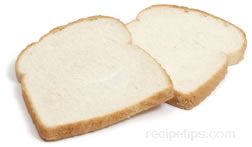




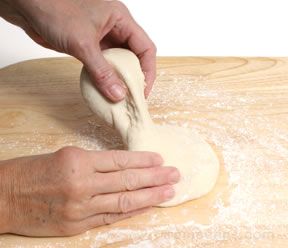 Gluten is the substance that gives bread dough its elasticity, strength, and makes the dough rise. Wheat has a high level of gluten. When breads are made with various types of non-gluten flour, wheat flour is often added so that the dough is able to rise effectively. Many types of flour milled from various grains, seeds, legumes, tubers, and nuts do not contain gluten.
Gluten is the substance that gives bread dough its elasticity, strength, and makes the dough rise. Wheat has a high level of gluten. When breads are made with various types of non-gluten flour, wheat flour is often added so that the dough is able to rise effectively. Many types of flour milled from various grains, seeds, legumes, tubers, and nuts do not contain gluten.
